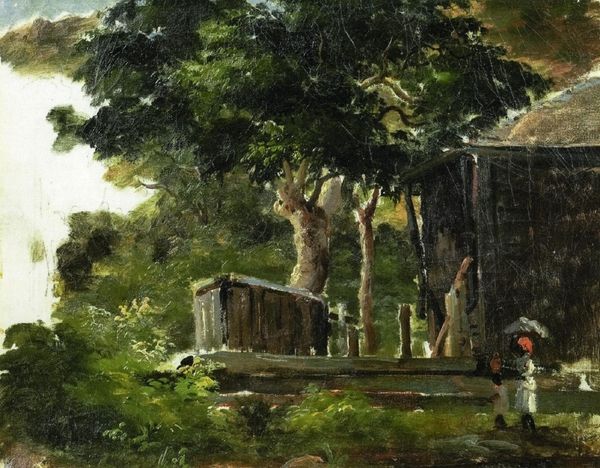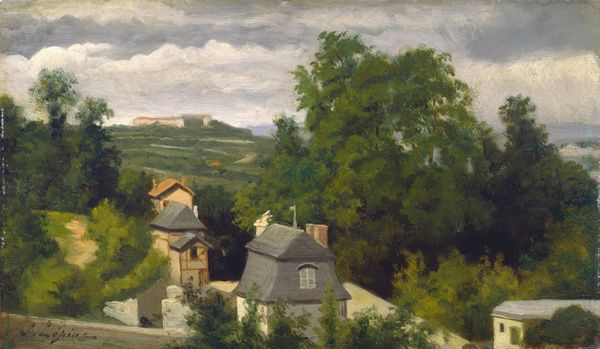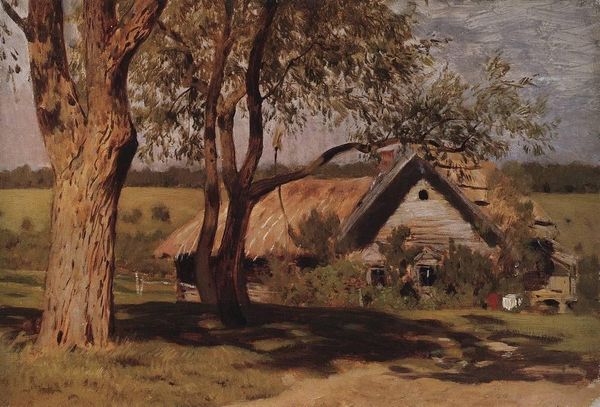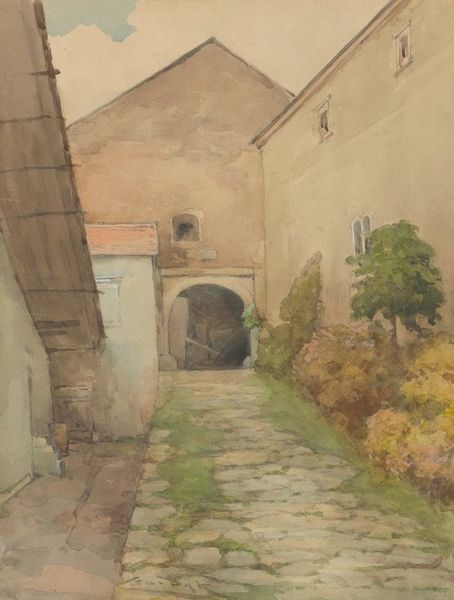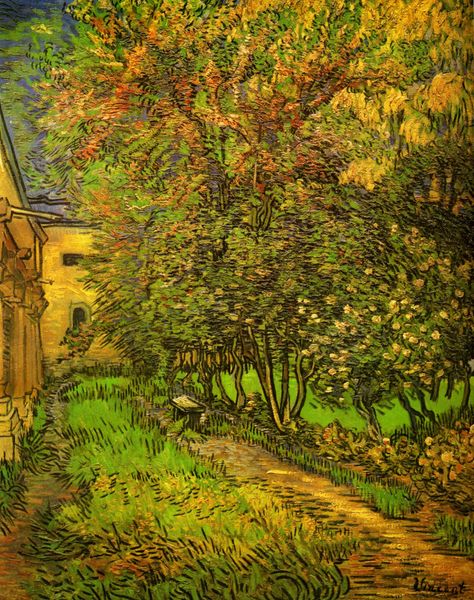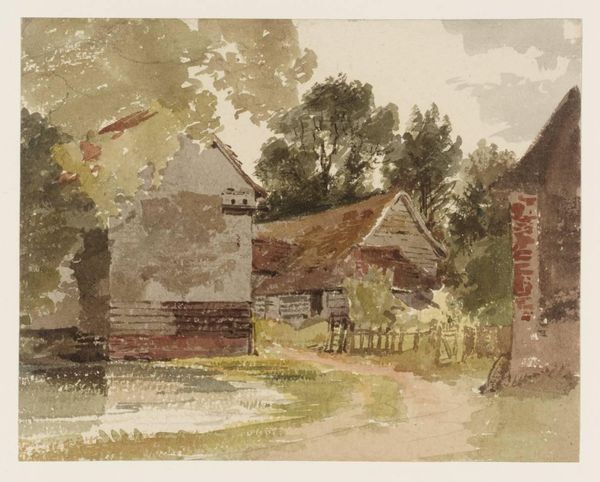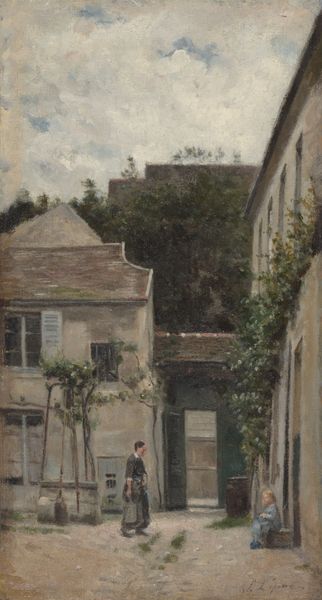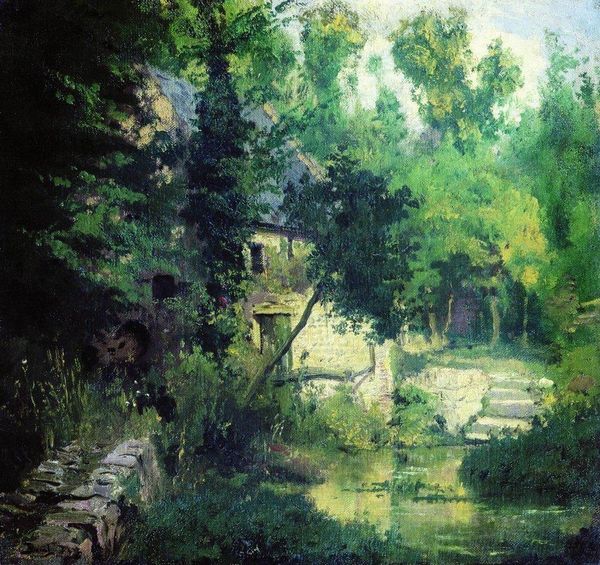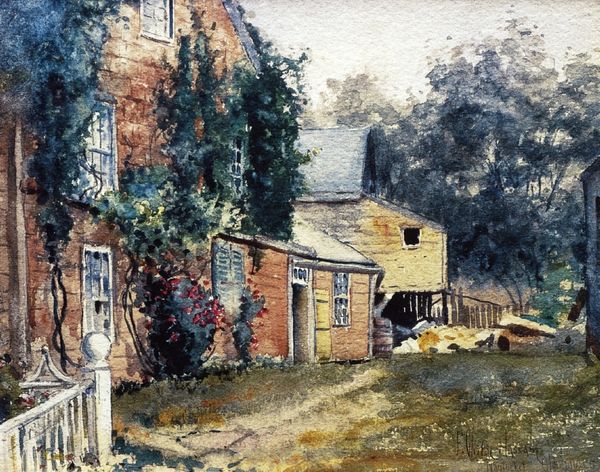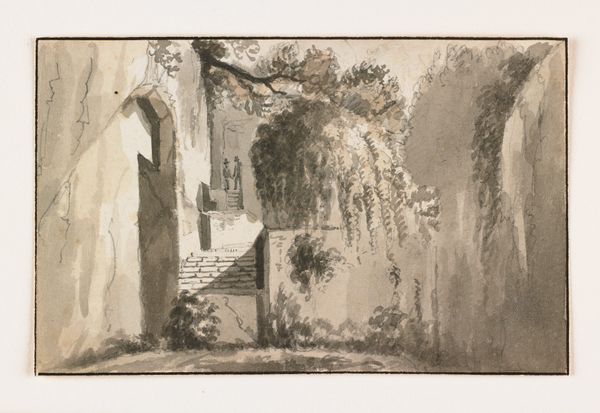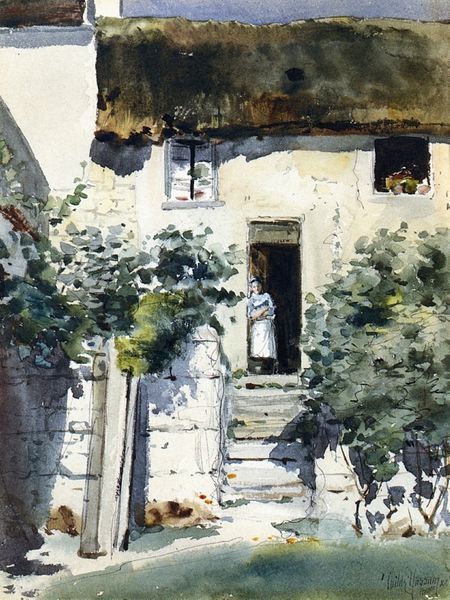
tempera, painting, plein-air, watercolor
#
tempera
#
painting
#
impressionism
#
plein-air
#
landscape
#
watercolor
#
watercolor
Copyright: Public domain
Editor: So here we have Childe Hassam's "White Barn" from 1882, painted in watercolor, it looks like. The overall effect is incredibly tranquil; I feel almost drawn into the cool shade near the barn. How do you see this work? Curator: Tranquil, yes, absolutely! It's funny how a simple scene, almost ordinary, can evoke such stillness, isn't it? For me, this piece speaks of quiet observation. Hassam wasn't trying to capture grandeur; he was captivated by the interplay of light and shadow on a mundane structure. The unassuming White Barn amidst foliage is Impressionism at its most intimate, it makes me wonder how much painting en plein air shaped Hassam’s sensibilities, always embracing transient and fleeting moments… don’t you think? Editor: Absolutely. It seems he's less interested in architectural precision and more in how the light defines the space. The green surrounding the white-ish mass creates the mood of peaceful co-existence. The color harmonies seem effortless. Curator: Effortless, perhaps in the final effect, but consider the careful washes of watercolor! He’s a master of suggesting form with minimal detail. Notice how the green almost vibrates against the muted white of the barn. There’s a dance between precision and looseness that makes it so compelling. It almost reminds of how Monet used to see, just the bare sensations! Do you think Hassam found an inherent American beauty in painting such rural subjects at this time? Editor: That's a really good point, and yes, painting simple subjects suggests celebrating this aspect of rural life as inherently interesting! Thanks for pointing it out. Curator: My pleasure! It's works like these that remind me that true beauty often lies hidden in plain sight. And the more we examine closely, the more it reveals of ourselves.
Comments
No comments
Be the first to comment and join the conversation on the ultimate creative platform.
